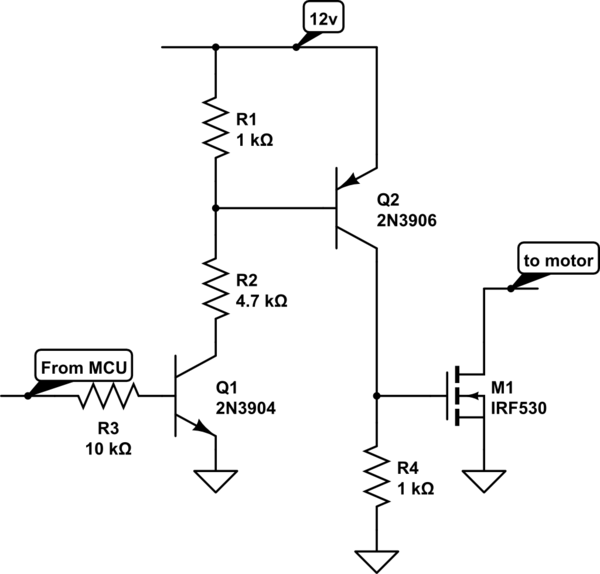I am using a PIC to drive the gate of a logic level MOSFET. Although the 5V logic output of the pic is sufficient to exceed the threshold voltage I would like to drive the gate using 12V to reduce the Drain-Source resistance.
In order to achieve this I have drawn up the following circuit using two MOSFETs in series (as highlighted). Will this design work, and is it the best approach (keeping in mind i want to minimize the number of components).


